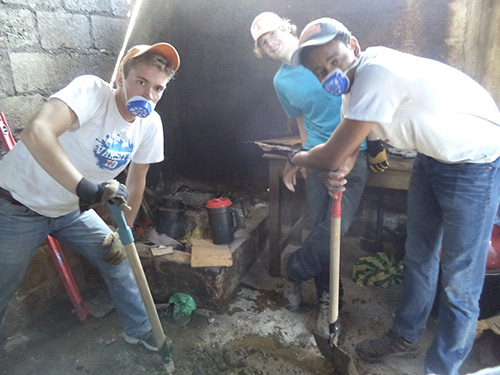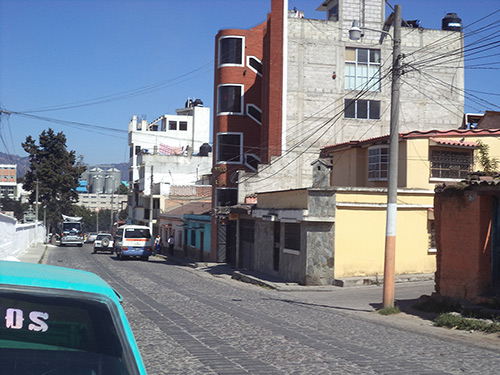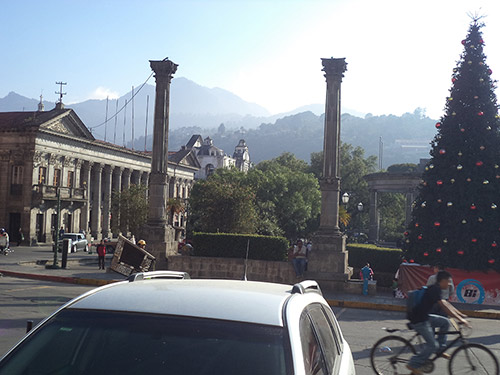Luke Weber: Student Report from 2014 Alternative Winter Break in Guatemala

In Quetzaltenango, Guatemala (colloquially named Xela), the sidewalks—if there are any—max out at only a few feet wide, as the houses and buildings extend right up to the edge of the almost exclusively cobblestone roads. The predominant method of getting from here to there in Xela is to walk on these sidewalks, or rather more accurately, walk throughout the streets, because the sidewalks feel as if they’re one with the road. Of all our experiences in Guatemala, walking in the Xela streets was, to me, the most memorable. To immerse oneself in the heart of a different lifestyle and culture, to observe and experience the world in a previously unbeknownst way, is something I never thought would be so remarkable, so life-affirming, as it was that week in Xela, Guatemala.
The bustling streets of Xela can take you anywhere you want to go and lead you to see anything you want to see. The streets can take you to Central Park, a sleepless square in the middle of town lined with banks, shops, restaurants, coffee shops, and a McDonald’s that serves fried chicken wings. The streets can take you to the massive cemetery that is easily a square kilometer in size, or to the soccer stadium that houses the games of the beloved Rams—noteworthy for being the third most-supported soccer club in all of Central America—or to the brewery occupying the town’s acropolis. You’ll see sign after sign advertising Pepsi, Orange Crush, and cerveza, the latter serving as a direct reminder of the aforementioned brewery’s towering influence over the town.

But no matter where the streets take you, you’ll always have a view of the picturesque scenery of the area. At an elevation of 7,640 feet (2,500 feet higher than Denver), the mountains, highlighted by a strikingly prominent volcano, layered with tropical vegetation and blanketed with clouds, are simply breathtaking. At night, the canvas of stars, free to shine without the pollution of manmade light, is indescribable.
The streets expose you to the eclectic street life of the locals. You’ll pass plenty of tiendas, little walk-up window snack shops that exist in a density of about three per city block, selling everything from 3-liters of citrus punch and 16-oz bottles of Pepsi (flavored with all-natural cane sugar!) to toilet paper and playing cards. The constant smell of deliciously fresca local delicacies fills the air from the hundreds of street-side food vendors, which are side-by-side with tables selling handcrafted jewelry, clothing accessories, and other trinkets. Walking in the streets will take you to the open air produce market, to hardware stores and internet cafes about the size of a typical American bedroom, and to the “mall” filled with specialty shops and boutiques selling souvenirs, locally-made hats and belts, and (possibly inauthentic) designer clothing. Everything you can buy in Guatemala is amazingly cheap for our standards—cheap on the order of 25 cents for a Coke—that admittedly spoiled us, and I’m sure more than a few other tourists before us as well.
